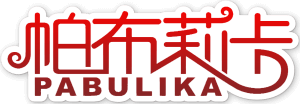悯[1]农(其一)
李绅
春种一粒粟[2],
秋收万颗子[3]。
四海无闲田,
农夫犹[4]饿死。
注释:
[1] 悯(mǐn):哀怜。
[2] 粟:种子。
[3] 万颗子:万颗粮食。
[4] 犹:仍然。
The Peasants (Ⅰ)
Li Shen
Each seed when sown in spring,
Will make autumn yields high.
What will fertile fields bring?
Of hunger peasants die.
悯农(其二)
李绅
锄禾[1]日当午[2],
汗滴禾下土。
谁知盘中餐[3],
粒粒皆辛苦。
注释:
[1] 禾:禾苗。
[2] 日当午:指中午。
[3] 餐:饭菜。
The Peasants (Ⅱ)
Li Shen
At noon they weed with hoes;
Their sweat drips on the soil.
Each bowl of rice, who knows?
Is the fruit of hard toil.
The poet sympathizes with peasants who toil all the year around but die of hunger.
《悯农二首》是唐代诗人李绅的组诗作品。这组诗深刻地反映了中国封建时代农民的生存状态。第一首诗具体而形象地描绘了到处硕果累累的景象,突出了农民辛勤劳动获得丰收却两手空空、惨遭饿死的现实问题;第二首诗描绘了在烈日当空的正午农民田里劳作的景象,概括地表现了农民终年辛勤劳动的生活,最后以 语近意深的格言,表达了诗人对农民真挚的同情之心。组诗选取了比较典型的生活细节和人们熟知的事实,集中地刻画了当时社会的矛盾。风格简朴厚重,语言通俗质朴,音节和谐明快,并运用了虚实结合与对比手法,增强了诗的表现力。
这两首诗不仅在民间广泛流传,在中国文学史上亦有一定影响,近代以来更是多次入选义务教育语文教科书。
Two Poems on “The Peasants” is a group of poems by Li Shen, a poet of the Tang Dynasty. The poem reflects profoundly the living conditions of the peasants in feudal China. The first poem depicts the fruitful scenes everywhere, highlighting the reality of the peasants’ hard work and harvest, but with empty hands and starving to death; the second poem depicts the peasants working in the fields at noon in the scorching sun, summarizing the peasants’ life of hard work all year round. The poems are selected from typical details of life and well-known facts to portray the social contradictions of the time in a concentrated manner. The style is simple and heavy, the language is plain and simple, the syllables are harmonious and clear, and the combination of reality and contrast is used to enhance the poems’ expressive power.
These two poems are not only widely circulated among the people, but also have a certain influence in the history of Chinese literature, and have been selected for many times in compulsory education language textbooks since modern times.

















